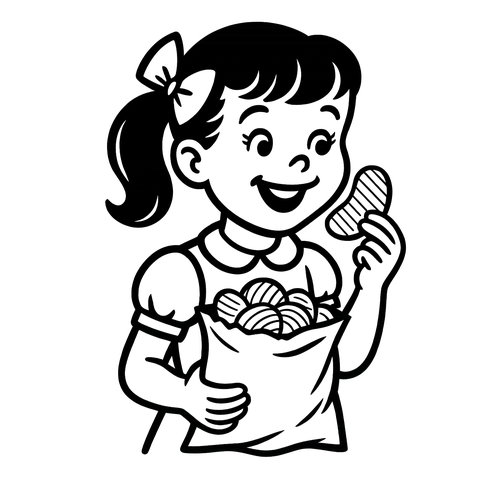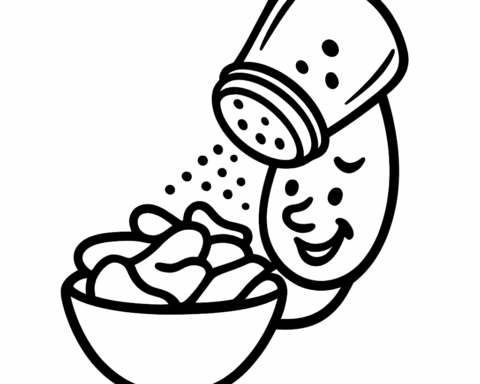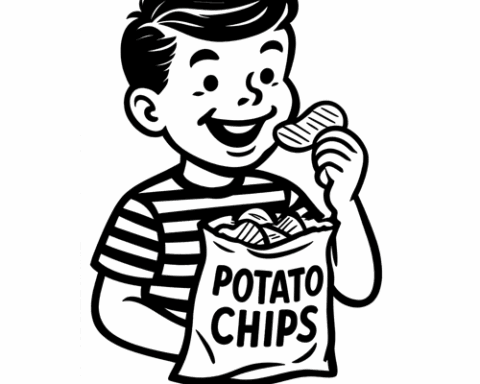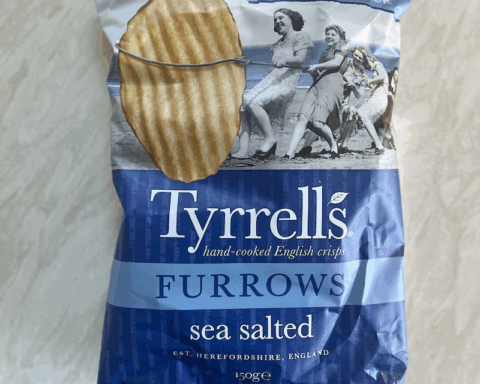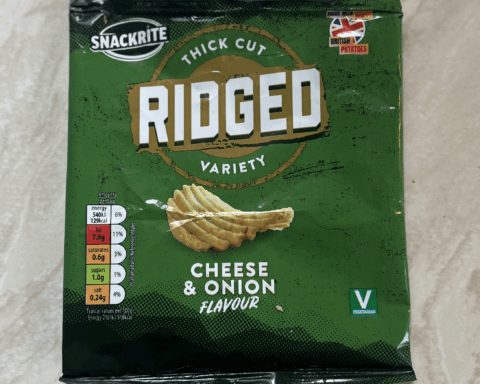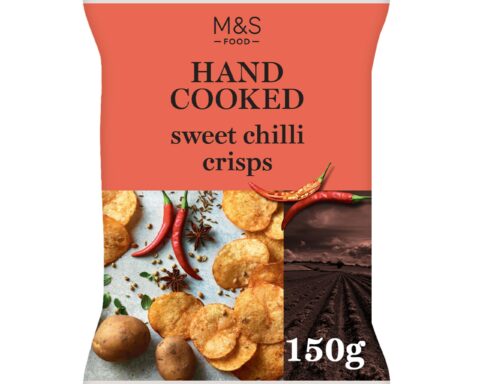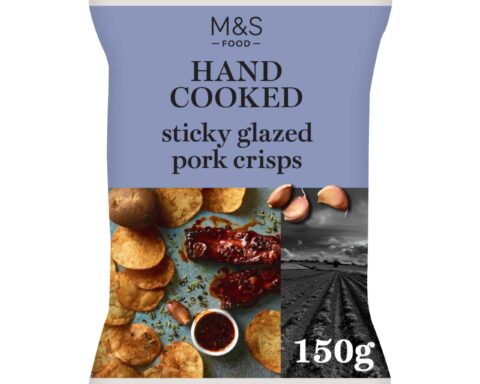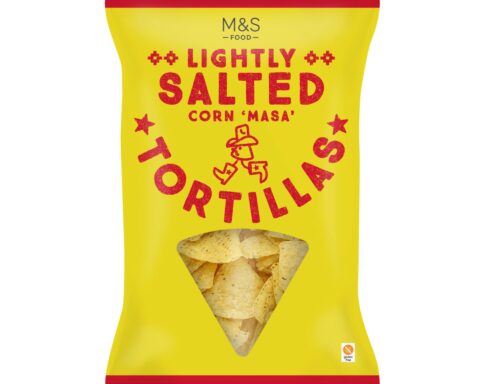Let’s begin with a confession: I’ve spent an inordinate amount of time thinking about crisps.
Not just eating them — though I’ve done that with admirable consistency since childhood — but truly contemplating them. Pondering their boundaries. Questioning their form. Examining their soul, if such a thing exists in a sliver of salted starch. And it leads me inevitably to this question:
When is a crisp… not a crisp?
It sounds like the start of a pub quiz riddle or the tagline for an existential snack campaign. But it’s a real question. And, depending on who you ask, the answer can veer from passionate certainty to blank incomprehension. So let’s break it down.
What is a Crisp?
At first glance, the definition seems obvious:
A crisp is a thin slice of potato, fried or baked until crisp (hence the name), and usually seasoned with salt or flavourings.
But even here, the foundations tremble. Because once you begin tugging at that definition, things get murky. Is it still a crisp if it’s made from maize? What about lentils? Or if it’s puffed rather than sliced? Is a Pringle a crisp — or an abomination engineered by snack technocrats in a lab? (More on that later.)
We Brits are famously territorial about our crisp taxonomy. In the UK, we say crisp; in America, it’s chip. Their crisps are our biscuits, their biscuits are a kind of scone. But let’s not get distracted by transatlantic madness. We’re here to draw the line — gently but firmly — in salt and vinegar.
The Core Qualities of a Crisp
I propose that for something to truly qualify as a crisp, it must satisfy at least three of four core criteria:
- Made from potato – either sliced or reconstituted, but potato must feature as the primary ingredient.
- Cooked until crisp – whether fried or baked, the texture should be audibly crunchy.
- Eaten cold – crisps are not hot food. Warmed-up crisps are culinary horror.
- Sold in a bag and eaten with fingers – a crisp is handheld. Once a utensil is required, the spirit is broken.
Let’s test a few candidates.
The Classic Walker’s Crisp
✅ Potato
✅ Fried
✅ Crunchy
✅ Cold
✅ Comes in a bag
✅ Finger food
This is textbook. Gold star. The Platonic ideal of a crisp.
Pringles
Here comes the controversy.
✅ Crunchy
✅ Cold
✅ Finger food
❌ Not made from sliced potato – it’s a slurry of dehydrated potato flakes, shaped into perfect hyperbolic paraboloids by machines with more engineering qualifications than I have.
❌ Sold in a tube – a structural departure.
Is it a crisp? Technically, even the US Supreme Court debated this (UK court ruled Pringles weren’t crisps for tax reasons). My view? They’re crisp-adjacent snacks — respectable in a buffet, but spiritually estranged.
Tortilla Chips
❌ Not potato
✅ Crunchy
✅ Cold
✅ Eaten by hand
Delicious? Absolutely. A crisp? No. Tortilla chips belong in the chip/dip/dough triangle. Let them live their nacho life. They’re not trying to be something they’re not.
Vegetable Crisps
Ah, now we enter the “alternative crisp” category. Beetroot, sweet potato, even parsnip.
✅ Thinly sliced
✅ Fried or baked
✅ Crunchy
✅ Cold
✅ Sold in a bag
✅ Hand-friendly
They look like crisps. They crunch like crisps. But they whisper: “health food.” Still, I’d argue they’re crisps — distant cousins, sure, but attending the family BBQ.
When Is a Crisp NOT a Crisp?
So let’s flip it.
- When it’s puffed corn in disguise (looking at you, Wotsits).
- When it requires a fork or sauce ladle.
- When the crunch is simulated by sound effects in an advert, but the texture is suspiciously chewy.
- When it dissolves in your mouth like communion paper (certain low-calorie brands know who they are).
- And — dare I say it — when it’s served warm.
A crisp is defined not just by its ingredients, but by its integrity. A crisp doesn’t need frills. It knows who it is. It’s proud to be greasy, unapologetically salty, and finished in seconds.
The Crisp-Identity Crisis
In recent years, the snack aisle has become a confusing place. We’re in the era of “air-puffed pea bites,” “chickpea straws,” and “vegan cheese lentil hoops.” Healthier? Maybe. Crunchy? Sort of. Crisps? I don’t think so.
These are crisp impersonators — a modern snack diaspora shaped by guilt and nutritional labels. They might occupy the same shelf, but they don’t occupy the same space in our hearts. Or lunchboxes.
I don’t hate them. I admire their chutzpah. But I won’t call them what they’re not.
Why This Matters
This is more than semantics. It’s about cultural identity. About that moment you reach into a bag during a train journey, at a pub, or after a terrible Monday — and the sound of the rustling plastic signals something primal.
Crisps are comfort. Crisps are honest. And crisps are sacred in their simplicity.
So when is a crisp not a crisp?
When it forgets what it’s trying to be.
When it hides behind quinoa.
When it loses the joy, the crunch, the soul.
Final Thoughts
The next time you find yourself scanning the snack aisle, hold fast to the standards. Demand crunch. Demand potato. Demand that satisfying, salt-slicked, mouth-splintering glory that only a true crisp can provide.
And remember: not everything that crunches deserves the name.
Choose wisely. And pack napkins.
